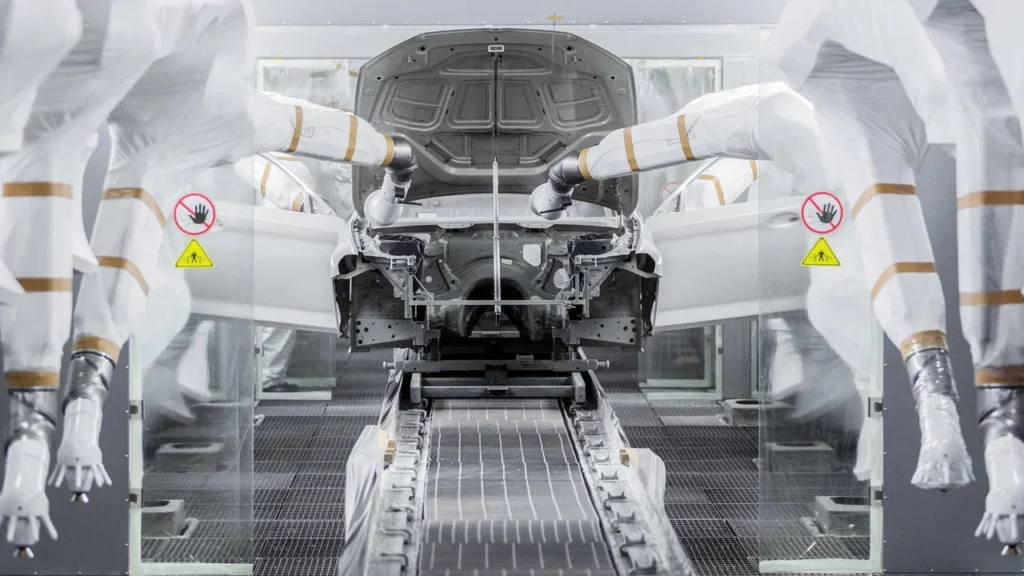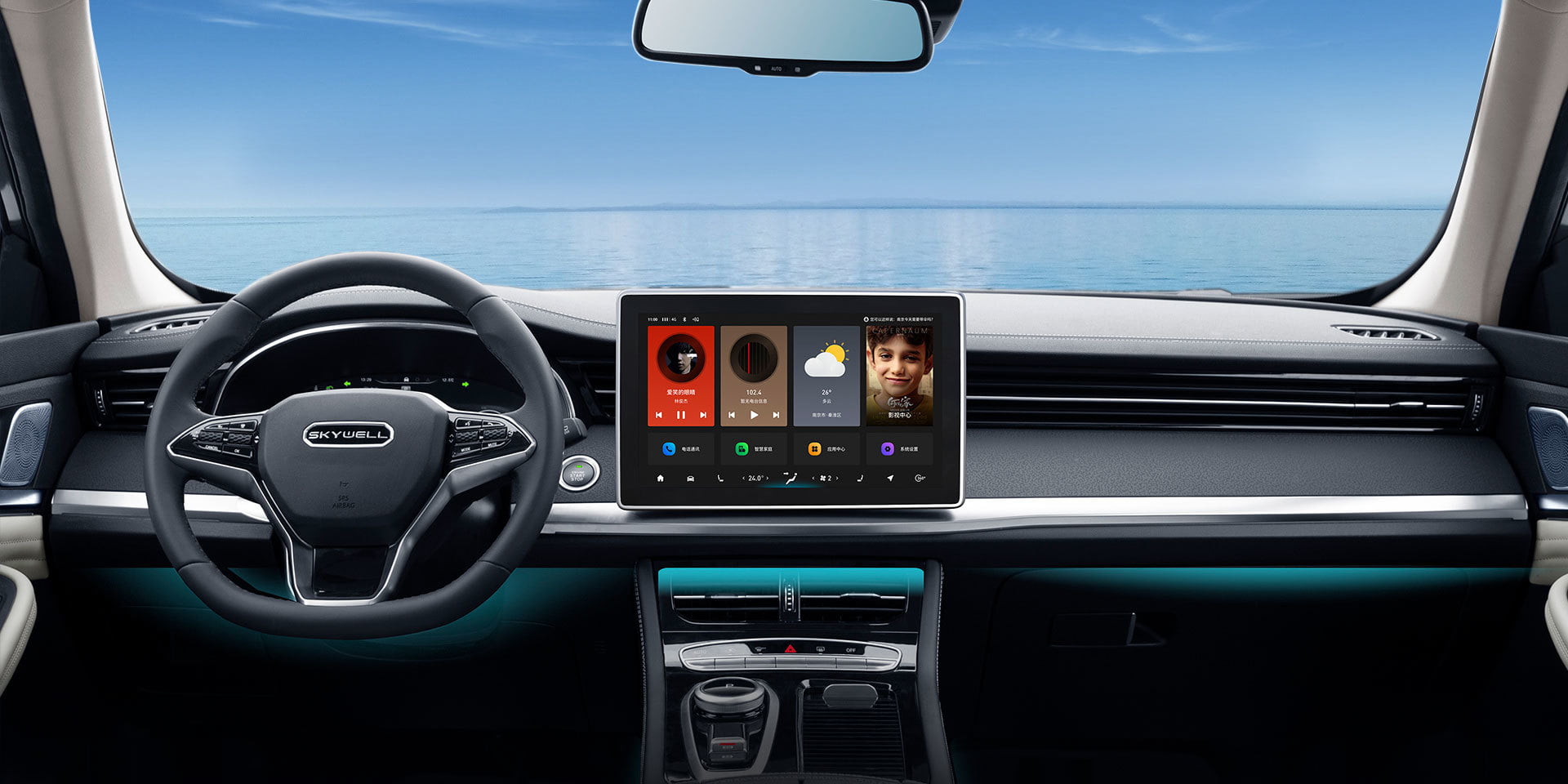Electric cars are a technology that offers new experiences in terms of fuel efficiency, high performance and environmental awareness. In this context, it works with a new and powerful engine technology. If you are wondering What is the working principle of electric car?, you can have a pleasant reading in this article.
Electric motors are used in electronics, from the fans of washing machines to the fans, especially thanks to the advantages they offer in terms of fuel efficiency. Today, electric motors, which often come to the fore in automobiles; It offers efficient use thanks to its professional working principle and high performance. Its structure, which offers higher efficiency, wear resistance and bidirectional running characteristics compared to conventional vehicles running on gasoline or diesel, is among other prominent details. Electric motors also run very quietly.
In order to better understand the working principle of electric cars, first of all, the functions of the parts in the engine should be known. There are no mechanical parts in the engine of electric cars. While there is an effort to obtain the energy of motion by creating an electromagnetic field, there is no classical motor system. The electric motors of electric cars are powered by a rechargeable battery. In the engine system of electric cars, there are two main components called rotor and stator, as well as many auxiliary components.
The main and auxiliary components of electric cars are as follows;
- Rotor: Rotor, also called armature; It is positioned as the movable main part of the induction motor. The rotor, which is wound on the shaft, consists of siliceous sheets with cavities on it. It uses the mechanical field that occurs in the stator for the rotation process.
- Stator: The stator called an inductor; It is positioned as the electrically charged stationary part of the induction motor. It consists of round shaped thin sheets with a thickness of between 0.4 and 0.8 millimeters placed on top of each other. The inner and outer parts of the stator have the appearance of a recessed empty cylinder.
- Motor Shaft: It is a rod-like part inside the rotor and stator. It rotates continuously depending on the movement of the rotor. It is connected to the rotor and motor covers, that is, to the outer body, by means of bearings.
- Connection Terminals: It is used for connecting electrical transmission cables that are formed as a group or in two parts. It provides insulation and stability between cable connections.
- Stator Windings: They are placed in the grooves on the stator and attached to the body with nuts or screws. These windings act as magnets and create the magnetic field in the stator. It creates a strong insulation environment by converting high voltage to electric current.
- Fan: It is located between the outer fan cover and the engine cover. It prevents possible malfunction situations by preventing the engine from overheating while in motion. It is also very effective in reducing the high heat coming to the radiator.
There are some features that contribute to the working performance of electric cars. These vehicles do not have many moving parts, gearbox, clutch lining, close tank, pistons, exhaust system, oil and water pump. Thanks to these, the electric car engine has less powertrain and number of parts compared to the internal combustion engines. In this way, electric motors provide higher efficiency.
Engine Structure of Electric Vehicles

With the development of technology, the engine structure of electric cars, which stand out with their design quality, differs from other vehicle engines. Electric motors use alternating current (AC). electric car engine; It is designed as a fuel-saving, quiet-running, oil-free and high-efficiency part. Unlike gasoline vehicles, electric cars do not need the engine to reach a certain speed in order to feel the torque power. In addition to the engine, the electric vehicle is used thanks to the battery of the vehicle.
Lithium-ion batteries are used in the battery structure of electric cars. The efficiency of these batteries decreases over time as they are used. For this reason, it is aimed to obtain high efficiency by using lithium-ion batteries and batteries supported by the electric car for trouble-free use.
Electric cars are self-charging vehicles through charging stations. There are alternating current and direct current options at the charging stations. Direct current DC charging stations can charge electric cars in a short time. Alternating current, that is, AC charging stations, can charge the vehicle in a little longer time than DC.
Electric cars can also charge with self-recovery technologies. Regenerative braking systems stand out among these gain technologies. When the driver of electric cars takes his foot off the accelerator pedal, the vehicle automatically slows down a bit. During this deceleration, the battery is charged. There is a big difference between the energy spent and the energy gained thanks to the recovery technology. In other words, when the electric vehicle cannot gain as much energy as it consumes, it must be charged after a while.
The electric car engine, in short, gets its energy from the battery it contains. The engine structure of electric vehicles is simpler than conventional vehicles. The use of electric vehicles, which are gaining popularity as fuel-saving and environmentally friendly, is increasing day by day.
Electric Vehicle Fuel Cost
Electric cars offer users the opportunity to save fuel. The kWh unit is used to express the energy consumed by electrical devices. Just as in speed calculation, while expressing the power of energy, the amount produced or the energy consumed is calculated in hour units. The fuel value expressed in this unit is defined as the electrical energy produced or consumed in one hour.
The equivalent of 1 liter of gasoline consumed by a vehicle with an internal combustion engine structure in an electric vehicle is approximately 10 kWh. If an electric car travels 100 kilometers, it consumes about 18 kWh of electricity. This means very low energy consumption when compared to a vehicle with an internal combustion engine. It has been determined that a vehicle with an internal combustion engine operating principle consumes 6 times more fuel than this. Electric vehicle cost is determined according to this kWh value.
According to the driving distance, a gasoline vehicle consumes an average of 7 liters of fuel to travel a certain distance in 100 kilometers. In diesel vehicles, this value is around 5 liters on average. Diesel vehicles provide more fuel savings than gasoline vehicles in terms of fuel. However, fuel consumption in electric vehicles is much lower than in diesel and gasoline vehicles. In addition, it is an environmentally friendly means of transportation as it does not emit carbon emissions.
Electric Vehicle Control System
Control systems that stand out in electric car technology have many functions. In its primary function; The focus is on maximizing fuel efficiency and minimizing exhaust emissions. In electric vehicle systems and technology, fuel efficiency and exhaust emissions are also considered in a mutual contradiction.
As the energy produced by the internal combustion engine technology increases, the exhaust temperature decreases. As for the combustion of unburned hydrocarbons at low temperatures, various reactions may not occur. Therefore, in studies that increase fuel efficiency, the increase in compression ratio increases the temperature of internal combustion engines. The rising temperature value increases carbon monoxide (CO) and nitrogen oxides (NOx).
The secondary function of control systems is the monitoring and protection of hardware elements in electric vehicles. These functions also control the monitoring of the battery’s state of charge (SOC), monitoring of the battery temperature and preventing the electric motors from overheating. The battery of electric vehicles is a hardware device that requires special attention. Thus, it should guarantee long-term use without errors.
In the electronic control theory, the following come to the fore at the stage of controlling the electric motor control unit:
- Electric Engine Control Unit: Basically, it controls the transitions between the engine and generator modes of the electric motor. In addition, the situation of the torque mechanism expected by the hybrid control unit against the electric motor is also examined. Control theory strategies such as constant torque control, field weakening control mechanism are used.
- Transmission Control Unit: This unit controls the angular speed and torque of electric motors. During this control, it also determines the correct gear, that is, the gear ratio.
- Power Electronics Control Unit: This unit is primarily used to draw power from the battery. It is transferred to the electric motor with the appropriate voltage and current in the motor operating mode. It draws the power of the electric motor for regenerative braking while in generator mode. By activating this charge and discharge mode, it wants to switch the stable transition of the electric motor between engine/generator operating modes.
- Battery Management System (BMS): This unit measures battery temperature. In this way, it protects the battery from excessive heat-temperature increase and overcharge/discharge effect by activating the cooling function when necessary. Basically, it is aimed to provide a good fuel efficiency by preserving the battery life.
In electric vehicle control systems;
- Currents passing through inverter, battery and electric motors,
- Voltage currents passing through inverter, electric motor and battery terminals,
- The electric motor torques are controlled.
On and off mode, motor / generator operation, clutch and number of gears are controlled among the variables in electric motor mode.
For more content like ‘What is the Working Principle of Electric Car?’ you can check out our general category.
Is There Torque in an Electric Car?
Electric cars do not need a multi-speed gearbox since they work with an electric motor. RPM stands out in the electric car torque system. Internal combustion engines need more than one gear at different ratios for power output. However, electric motors produce consistent torque at any RPM over a certain range.
Electric motors do not feel the need to generate torque through revolution by applying power instantly compared to internal combustion engines. In this context, electric vehicle manufacturers use precisely calculated gear ratios to ensure high efficiency of their electric motors and a high level of comfort without the need for gear shifting.
In addition, most electric motors can operate at over 10,000 RPM. Since electric motors can produce torque in a wide RPM range compared to internal combustion engines, a multi-speed transmission system creates extra weight and production cost to the vehicle. For this reason, a decrease in the yield can be observed.
You Might Be Interested:
How Much Does an Electric Car Burn per 100 Km?
What is the Range of the Electric Car?
Where Can I Charge My Electric Vehicle?

